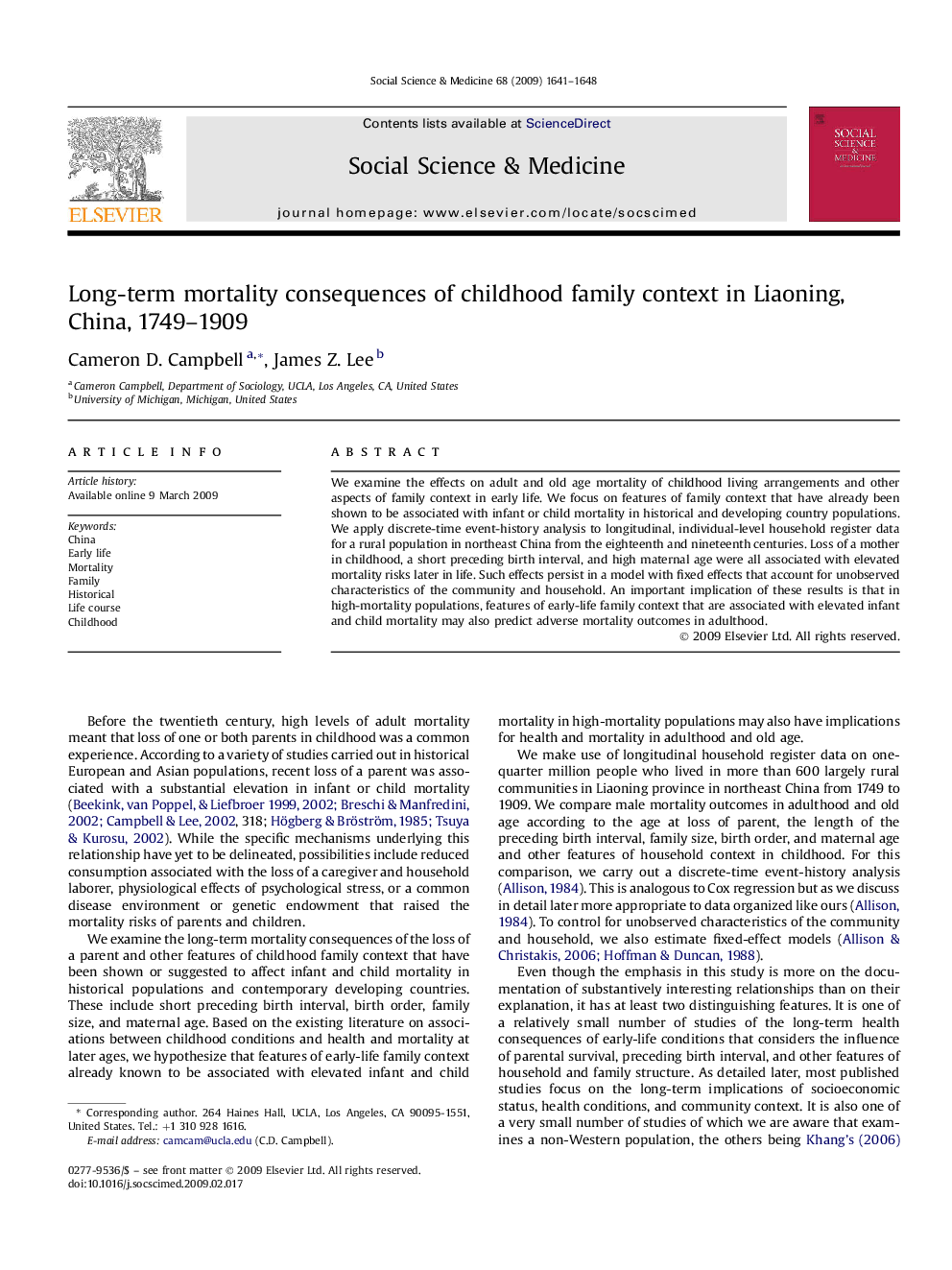| Article ID | Journal | Published Year | Pages | File Type |
|---|---|---|---|---|
| 10472096 | Social Science & Medicine | 2009 | 8 Pages |
Abstract
We examine the effects on adult and old age mortality of childhood living arrangements and other aspects of family context in early life. We focus on features of family context that have already been shown to be associated with infant or child mortality in historical and developing country populations. We apply discrete-time event-history analysis to longitudinal, individual-level household register data for a rural population in northeast China from the eighteenth and nineteenth centuries. Loss of a mother in childhood, a short preceding birth interval, and high maternal age were all associated with elevated mortality risks later in life. Such effects persist in a model with fixed effects that account for unobserved characteristics of the community and household. An important implication of these results is that in high-mortality populations, features of early-life family context that are associated with elevated infant and child mortality may also predict adverse mortality outcomes in adulthood.
Related Topics
Health Sciences
Medicine and Dentistry
Public Health and Health Policy
Authors
Cameron D. Campbell, James Z. Lee,
